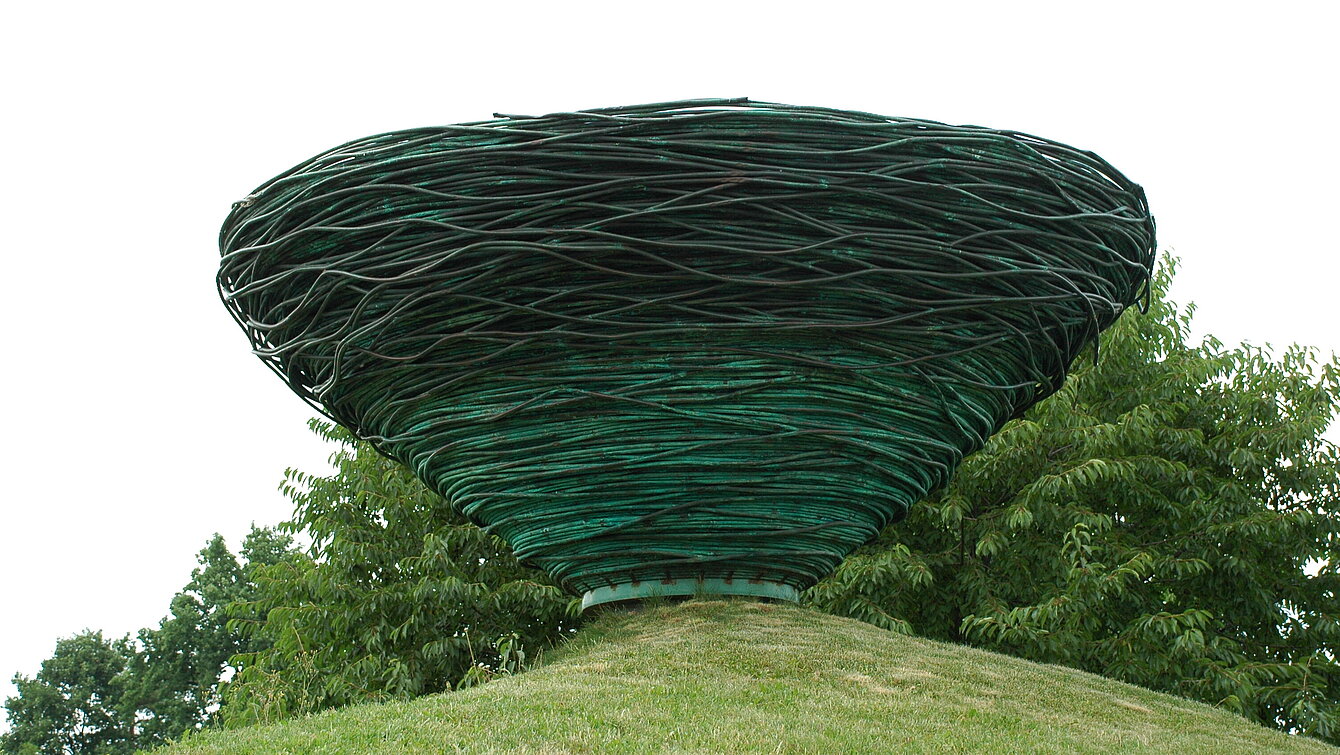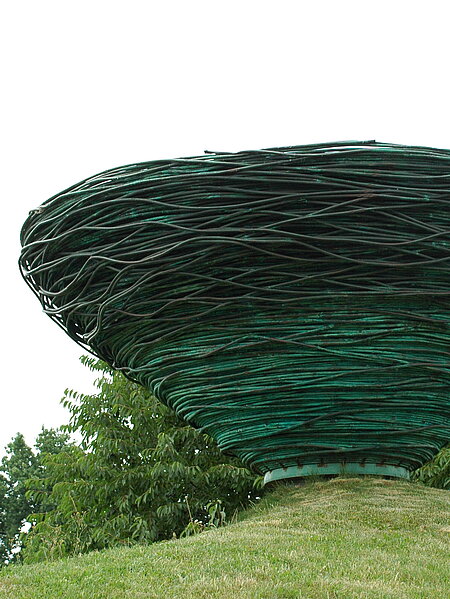Kienzer’s sculpture of coiled copper tubing rises high above the hilltop as if it were growing out of the landscape like a spiralling thicket, or perched over the terrain like a giant bird’s nest. Because of its positioning the object looks like a mirror-image or inverted continuation of the hill, so drawing attention to its own artificiality and sculptural qualities. The material from which it is made also relates to the eternal cycle of change in nature, since it undergoes a process of transformation through oxidation and becomes part of nature.
Untitled
Michael Kienzer, 1992/94


Image Credits
Author
Rainer Fuchs
Location on map
Position 26
Owner
Universalmuseum Joanneum
About the sculpture
Michael Kienzer
Show all
About the sculpture
Michael Kienzer’s sculpture “untitled” (1992/94) made out of twisted copper tube, forms a conical, funnel-shaped spatial meshwork, which was not just placed in the landscape, but rises over a knoll, and seemingly grows out of it.
It is as if the object were growing out of the landscape like spiral-shaped brushwood or, hovering like an oversized bird’s nest above the site. Thus it appears as a reversed sculptural comment or complementary continuation of this landscape formation.
In its reversed reference to the landscape, this artificial construct made of erogenous copper refers to the artificial element of the landscape itself and its sculptural characteristics. Hence it describes the landscape context it finds itself in as a calculated and constructed structure, thereby pointing out that each determination of naturality and nature will unavoidably reflect civilising framework conditions and ideas.
So the sculpture interprets its environment, by using it as an inducement for adapting its own shape to it. This is achieved by defining the connection between naturality and artificiality as a relational condition, which will unmask any polar comparison as being some kind of euphemism and simplification.
Furthermore, the sculpture conveys an element of processuality and dynamics with its roaring rotary appearance. In this, it metaphorically relates to what happens in nature as a permanent circle of changes. Due to the fact that the colour of the copper has changed because of oxidation, the object itself bears a natural process, the sculpture in nature becomes experienceable as part of nature itself.
A relation between art and reality is created here that is characteristic for Kienzer’s work, regenerating the form of the object to structure and function of its socio-cultural environment.



















